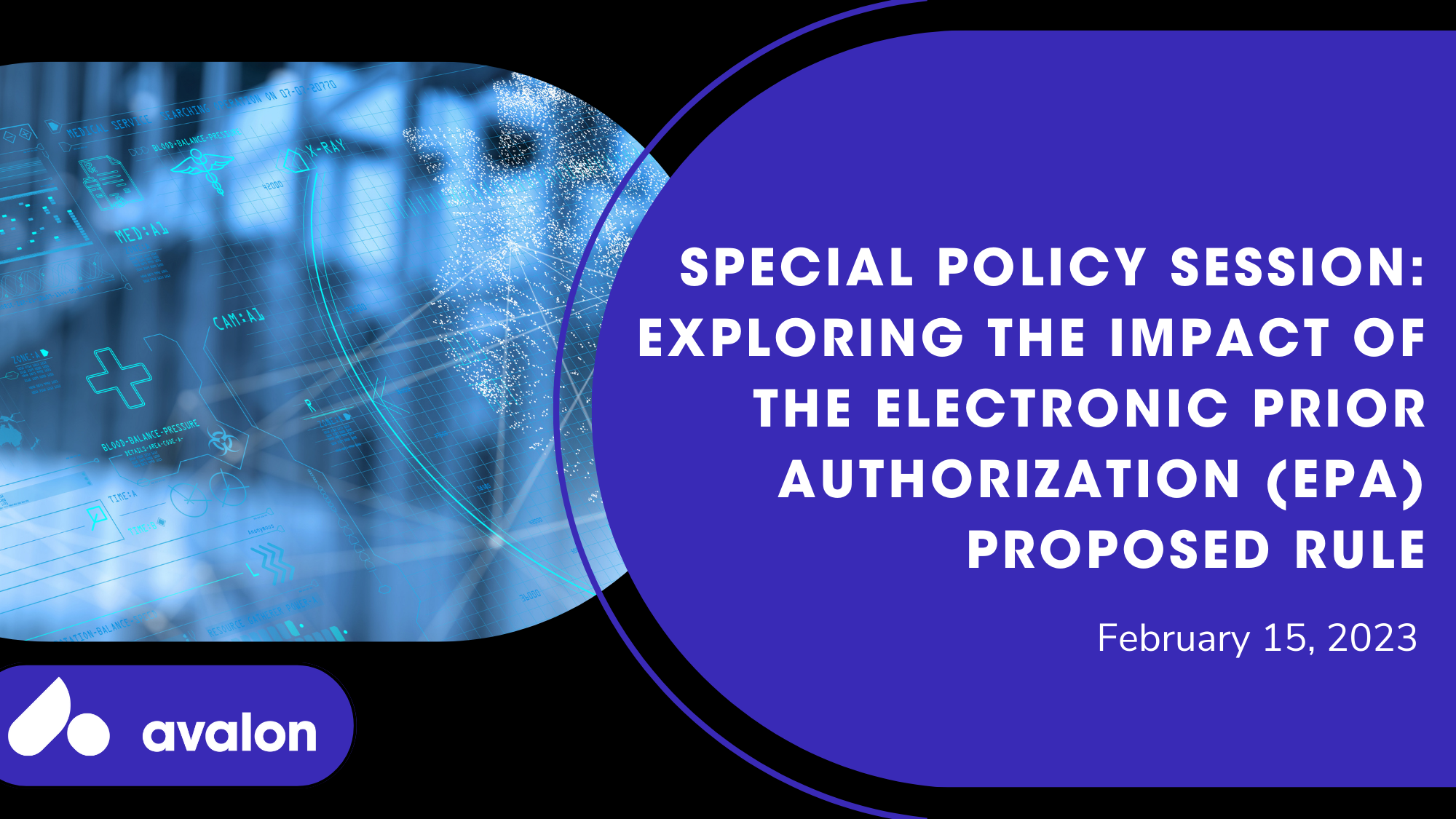Avalon Healthcare Solutions hosted a webinar on the proposed ruling for e-prior authorization and how it will impact healthcare. Julie Barnes, the principal of Maverick Health Policy, led the webinar with a policy and regulatory forecast. She addressed the many forthcoming regulatory changes, starting with end of the public health emergency.
Updates on Public Health Emergency, Health Data Privacy, and the No Surprises Act
According to the Biden Administration, the public health emergency will conclude in May, and with it, many regulatory placeholders instituted during COVID-19 will expire. Hospitals will no longer be provided with an additional 20% for treating COVID-19 patients. It’s also expected there will be a spike in the number of uninsured Americans; this will occur as Medicaid reconstitutes its participants based on eligibility. A multitude of rules that were relaxed during the crisis to allow for care, (i.e., telehealth services allowing providers to give services beyond state bounds) may also be re-instituted.
There has been a spike in regulatory activity over health data privacy. The FTC fined GoodRx for sharing its users’ personal information for advertisement purposes. This bellwether penalty is evidence that there may be a greater crackdown in information-sharing activity.
Additionally, the “No Surprises Act” will give rise to multiple new regulations this year. Under the Act, plans are required to share patient cost burden— akin to an advanced explanation of benefit – prior to providing healthcare services. Last, but not least, the Medicare Advantage Risk Adjustment Data Validation (RADV) rule means that CMS will finalize diagnosis rules on claims to see if health plans are being paid appropriately.
Electronic Prior Authorization (ePA) – How it Came About
Prior authorization serves as a method for the review of health services, procedures, and medications. Electronic prior authorization – a faster, automated, more integrated method – has been proposed to reduce the administrative burden in healthcare.
As a sea-change for health plans, providers, and patients alike, ePA would mandate new standards. Right now, providers use complex manual processing tools, which slows everything down. But the ePA attachment rule would streamline processes by conveying real-time information between stakeholders. New standards for ePA, when implemented, would affect the entire healthcare operation – from medical records to payer communication.
The new proposal from CMS is not final, as we are in the middle of the public comment period right now.
The Basics of the Rule
The goal of ePA is to streamline existing prior authorization processes with the aims of improving health data access, exchange, and care coordination.
The different pieces of the rule:
- Payers must implement a new API (application programming interface).
- ePA will require plans to report back.
- Payers must give reasons for a denial.
- There will be shorter decision timeframe (3-7 days) and new reporting requirements.
ePA Requirements, Documentation, and Decisions (PARDD) API
One huge technical feature of the proposal: payers must implement a new API. The API must be able to query the payer system to see if an item or service requires ePA. When the API does this, it will identify the documentation requirements necessary. The API will then generate a necessary response to pull down the data automatically, allowing providers to see the status of the prior authorization request.
Three details of this process:
- FHIR is the required data standard for this API.
- The requirements do not apply to drugs for the new ePA system
- Payers must share the electronic documentation system within one business day of any request (i.e., this could happen through a portal).
Sharing Information Among Stakeholders
CMS proposes to require information to be shared among different sets of stakeholders:
- Patients-Enrollees (Patient Access API)
- In-network providers who are treating the plan’s enrollees (Provider Access API)
- Other Health Plans (Payer-to-payer API)
Payers must share decision-making information with providers. Payers also need to share claims and encounter data (but not cost information) with providers. And, finally, payers must share information with other payers when an enrollee requests this information is shared (when they switch payers, for example).
The Bottom Line
This is a revolutionary time in healthcare. Most of these regulations and processes are incredibly new. Focus and diligence will be required to keep up with the regulatory activity. Healthcare stakeholders will need to take ePA regulatory information seriously to stay up to date with these sweeping changes. Finally, stakeholders can provide input to CMS now with the proposed rule commentary period closing on March 13, 2023.
Closing Remarks
Michele Norton, Avalon SVP, Product Marketing, closed the webinar by discussing how Avalon is supporting health plans prior authorization process in the lab space with Genetic Test Management by ensuring specificity and precision with coding, evidence-based policies coupled with automated policy enforcement. To learn more, access our informative webinar session about the Future of Test Specificity with Precision Genetic Management here.

